Hip arthrosis is a disease that is also called coxarthrosis and is found in a person due to a decrease in the amount of synovial fluid in the joint cavity.The consequence is a violation of cartilage nutrition and the gradual destruction of the joint surfaces.The disease is inherent in a chronic course, characterized not by inflammatory but by degenerative change in cartilage tissue and the gradual deformity of bone tissues.
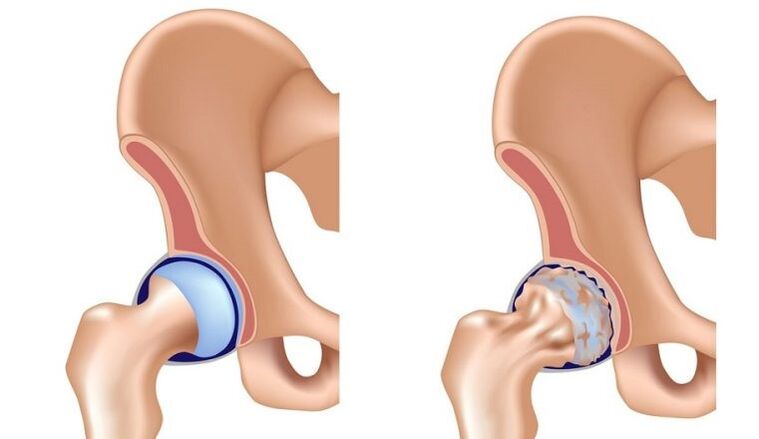
Treatment of coxarthrosis is a long and difficult process whose solution is the referee, choosing the right treatment regimen.With improper treatment, deep deformity is possible with the depletion of joint structures, the disease quickly progresses and can lead to damage and complete loss of motor activity of the affected joint.
Symptoms
Timely detection of the disease is an important component for more successful successful treatment.But in the initial stage of the disease, the symptoms are small and are limited to local pain, without obvious signs and external changes (lack of edema, discoloration and structure).Therefore, in most cases one simply does not pay due attention to the manifestation of these signs, delaying a visit to the doctor and thus allows the disease to slowly and properly progress.
There are four degrees of arthrosis and at each stage there are certain symptoms inherent in 1, 2 3 or 4 stages, but there is a certain series of symptoms when you find that you should consult a doctor immediately to find a true illness.Such symptoms include:
- Severe thigh pain, groin.The pain is real and disappears after a short break.
- Morning joint stiffness.A distinctive feature of joint diseases, manifested mainly in the morning, after a long break.It is characterized by limiting the mobility of the limb, stiffness, unpleasant sensations.It is usually necessary about an hour after waking up to disappear the symptoms.
- Bluff in the joint, fitting sounds when walking.
- Change of gait, the appearance of the lame.
- The appearance of the difference in the length of the limbs.This symptom is found in the short stages of the disease, the shortening or prolongation of the affected limb is associated with a change in the structure of the pelvis, its deformation.
The above symptoms are common and are found in many other diseases, which is why you need to consult a good specialist, with additional examination methods for the correct differential diagnosis with other similar diseases and accurate diagnosis.
Reasons
As they grow old, the human body wears out and there is a gradual delay in the work of all systems and organs, metabolism slows down.This applies to the condition of the bones, joint bags and cartilage, which, under the influence of constant loads, become thinner and deform over time.The amount of synovial fluid fills the cavity of the joint, leading to a decrease in natural depreciation and an increase in the load, followed by the destruction of joint cartilage.
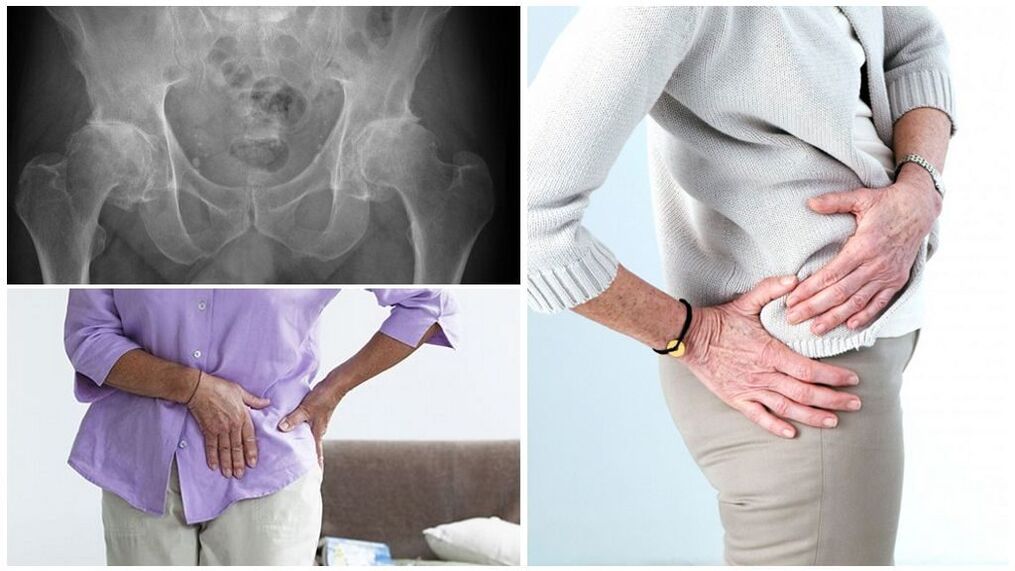
In addition to physiological, associated with natural age changes in the body, other causes of hip arthrosis on the occurrence of hip joints include:
- Hard physical labor.
- Heredity (belongs to dysplasia of the hip joint).
- Excess weight.Excess body weight increases the load of the musculoskeletal system.
- Hormonal disorders.
- Inflammatory diseases (infectious arthritis, rheumatoid arthritis).
- After the traumatic arthrosis of the hip joint occurs 20-40% after injuries.
Types and degree of illness
Based on the results of the clinical picture and on the basis of radiological indicators, 4 degrees of the disease are distinguished.
First degree
If at this stage the disease is detected, the treatment is most effective, the affected joint can be preserved, ensuring the proper treatment regimen without the need for surgery.But the recognition of the disease at this stage is not so simple because the symptoms that manifest themselves are insignificant and are characterized by similar symptoms:
- Morning stiffness.
- Pain in the groin.
- Minor, sick pain that occurs during physical exertion in the hip joints.
- In radiography, in the presence of 1 degree of the disease, there is a slight narrowing of the joint precipice, it is possible to unit foci of the sealing of hyaline cartilage, the growth of the bones in the rotating area.
Second degree
The second degree of the disease is manifested by more pronounced symptoms.This stage is characterized by:
- The onset of pulling, sick joint pain, not only after physical exertion, but also when performing minor motor activity.The pain increases in the evening and at night.
- When motor activity, a change in gait occurs.There is a "duck walk", a person who is limping after a long walk, trying to rely on a healthy leg, thus protecting the affected joint.
- There is a violation of the movement of the affected hip joint, the difficulty in leaving the affected limb.
- X -ray marks a significant narrowing of the joint precipice as well as bone growth.
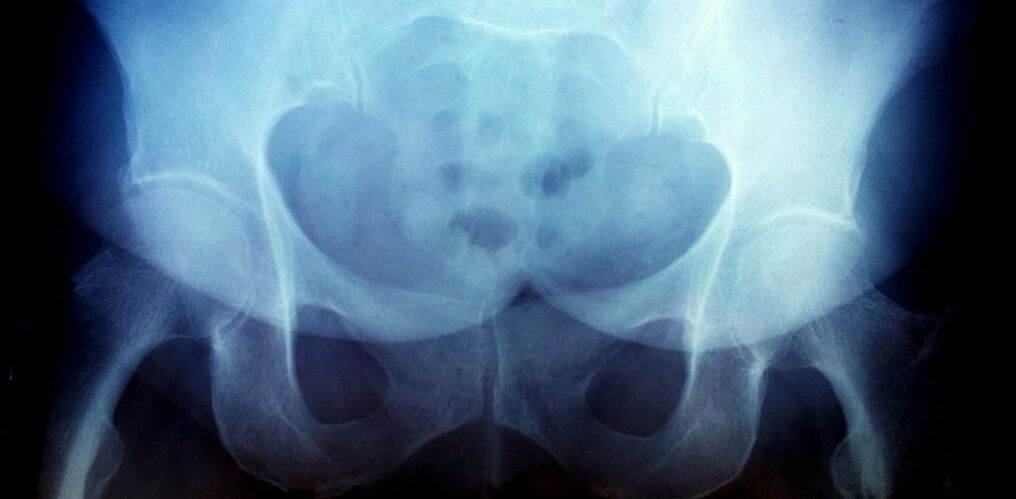
Third degree
The clinical picture has pronounced manifestations in which there are:
- Constant severe pain and at rest.
- Complete loss of motor activity of the affected joint.
- The appearance of the difference in the length of the limbs.The leg with the affected becomes a shorter than a healthy limb.
- X -ray marks the complete destruction of the cartilage of hyaline, the growth of large osteophytes, the destruction of the femur.
Fourth degree
The 4th degree pelvic arthrosis is characterized by the complete atrophy of the muscles surrounding the hip joint of the affected limb.A complete loss of physical function is also noted in 4 stages.The patient is not able to step on the inflammation leg and cannot do without crutches.X -ray has osteocosclerosis of the bones, large bone growths and the complete absence of a joint difference.
Treatment at this stage is only possible in an operational manner.
Diagnostics
A number of certain studies are needed to make an accurate diagnosis and to make timely treatment.The diagnosis is carried out in several stages.
- General examination, collecting a history of the disease.The doctor will clarify the information about the presence of injuries, related diseases and an existing lifestyle.A properly conducted study helps to make a proper diagnosis, to determine the degree of disease and to eliminate a number of diseases that have similar symptoms, such as arthritis, sacroili.
- In addition to the study, the attending physician prescribes the necessary laboratory examinations.
- X -ray study is a mandatory diagnostic point.A study of the hip joint on both legs is conducted, even if the patient's complaints are applied to only one limb.
- Computer tomography is considered an additional method of examination.Using CT, you can study the nature and degree of damage to the hip and joint surfaces.
Arthrosis
When suspicious symptoms and pain in the hip joint occur, one arises mainly to the question of which doctor heals such conditions and how suicide occurs.

In the first symptoms, it is necessary to seek help in the diagnosis and treatment with a rheumatologist, while the treatment of more severe forms of arthrosis is engaged in an orthopedist.
Treatment depends on the degree of disease and the nature of the manifestation.The treatment regimen is selected by a doctor for each patient individually.The basic principles of treatment include events such as:
- Treatment with medicines.
- Diet.
- Physiotherapy.
- Massage.
- Gymnastics.
- Kineseoteiping (sticking the hip joint with special patches).
- They resort to cane and crutches to remove the load from the affected joint.
Drug therapy
The treatment regimen for hip lesions without failure includes medication.The earlier you start therapy, the more likely it is to limit the treatment of conservative methods without the need for surgery.
The diagram of drug treatment includes a complex of medicines:
- Non -steroidal anti -inflammatory drugs are used to relieve the pain as well as to reduce the inflammatory process.
- When the fluid accumulates in the joint cavity, intracerated injections are used.
- Chondroprotectors are used to feed the tissues and improve blood circulation.
- Local use therapeutic ointments, applying in the area of the affected joint.
Physiotherapy procedures
The physiotherapy method is aimed at improving the blood supply to the affected joints and improving metabolic processes.The physical arthrosis of the hip joint includes:
- Magnet-laser therapy.It helps to reduce pain, improve the mobility of the affected joint.
- Laser treatment.The action of the light laser is aimed at eliminating the inflammatory process, reducing the swelling, and the restoration of cartilage.
- Thermal therapy.It includes mud, paraffin therapy due to the thermal effect on the affected area, the blood circulation is improved and the metabolic processes are normalized.
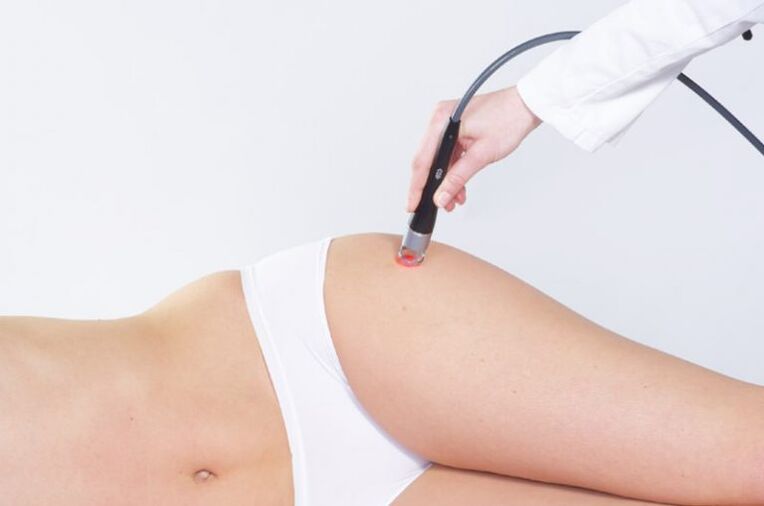
Each type of physiotherapy procedures has a positive effect on the affected joints, but at the same time a number of contraindications.Physiotherapy during pregnancy, oncology, tuberculosis is not allowed.
Massage and therapeutic gymnastics
This group of therapeutic measures is an integral part of the complex treatment of coxarthrosis.
The benefits of massage and therapeutic gymnastics:
- Improvement of blood circulation.
- Removal of muscle spasm.
- Increasing the motor activity in the affected joint.
- Pain reduction.
- Increasing the diastasis in the joint of the affected joint.
Massage sessions are allowed to be performed at all stages of the disease, but for each stage by maintaining certain conditions.The therapeutic massage is performed only by a specially trained specialist, each session of the massage is carried out in several stages:
- Back massage.It is performed with the help of caressing movements with the palms, helps to increase blood circulation and prepares for the next stage.
- Handmade lower back massage.It consists in the same bunny, rubbing and mixing of the lumbar region.
- Massage of the sacral and visual zone.
- Thigh massage.During this stage, the specialist is squeezing and rubbing the movement of a massage, capturing the area of the affected joint.
At 1 and 2 stages of the disease, it is recommended that a self -massage session be conducted, dedicating the process at least 5 minutes a day.
During the Self -Personality session, the sequence of actions is also important, it is necessary to perform the following exercises alternatively:
- Massage the back area with your palms by making the ascending and descending spine and then make rubbing movements with the back of the fists.
- Start the butt massage in the upright position by doing the hips from the hips to the sacrum and the lumbar region.After finishing the caress to start rubbing.
- The last stage is the massage of the hip muscles, which is done in a sitting position.Alternatively, rubbing, rubbing and kneading are performed.
3 and 4 stages of the disease suggest massage after surgery, a course of a therapeutic massage for rapid rehabilitation is performed.
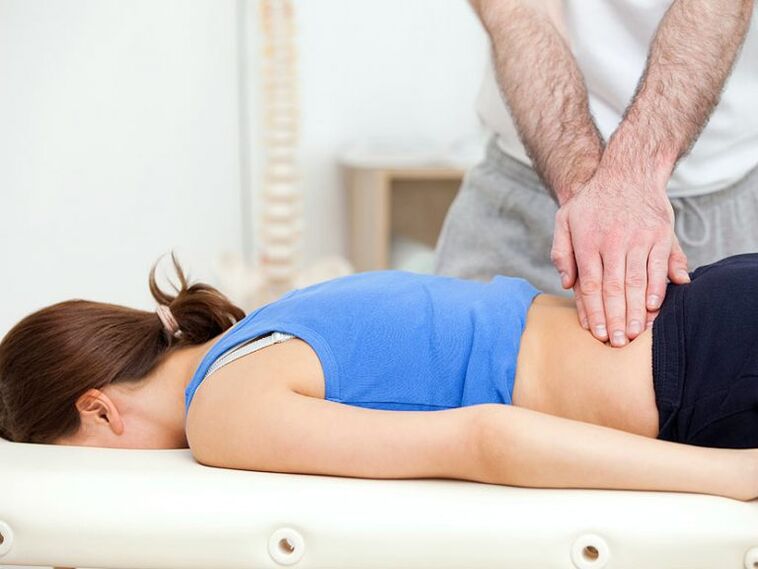
Massage sessions alternate with the course of therapeutic gymnastics.Gymnastics for arthrosis is aimed at increasing blood flow to the muscles of the hip joint, which contributes to better saturation of the joints with nutrients.
Each author's technique has its own characteristics and a number of contraindications to determine which gymnastic exercise scheme to adhere to the attending physician.
At home, you can perform a number of simple exercises, such as:
- In the position to lie on the back, slowly, alternate each leg at an angle of 50 degrees.
- He lies on his back, bending his legs and lifting his head off the floor, try to get to your knees.
- In the upright position, remove it and raise a straight leg back, trying to hold it in this position for a few seconds.
When dealing with gymnastics, it is important not to rush and perform tasks as much as possible, while maintaining a uniform, calm breath.Acute, inaccurate movements can cause injuries.It is important to remember that only the attending physician may prescribe exercises based on the condition of a particular patient.In addition, the exercises should be performed in the presence of a specialist to control the correctness of the exercise.
Dietary therapy
The diet plays an important role in treatment.In the treatment of arthrosis, it is recommended to use 1600-1800 kcal per day, distributing the daily volume of 5-6 meals.Food should be balanced and rich vitamins and monitors elements.With overweight, the well diet will help reduce weight, thus reducing the load on the inflamed joint.
By observing the right diet, you should consider which products should be included in the daily menu, as well as what should be completely excluded from your diet.
| Recommended: | It is necessary to limit it: |
| Aspic | Coffee |
| Vegetables, fruits | Alcoholic beverages |
| Varieties of low fat from meat and fish | Bread products |
| Milk and dairy products | Salt |
| Green | |
| Legume | |
| Buckwheat | |
| Nuts |
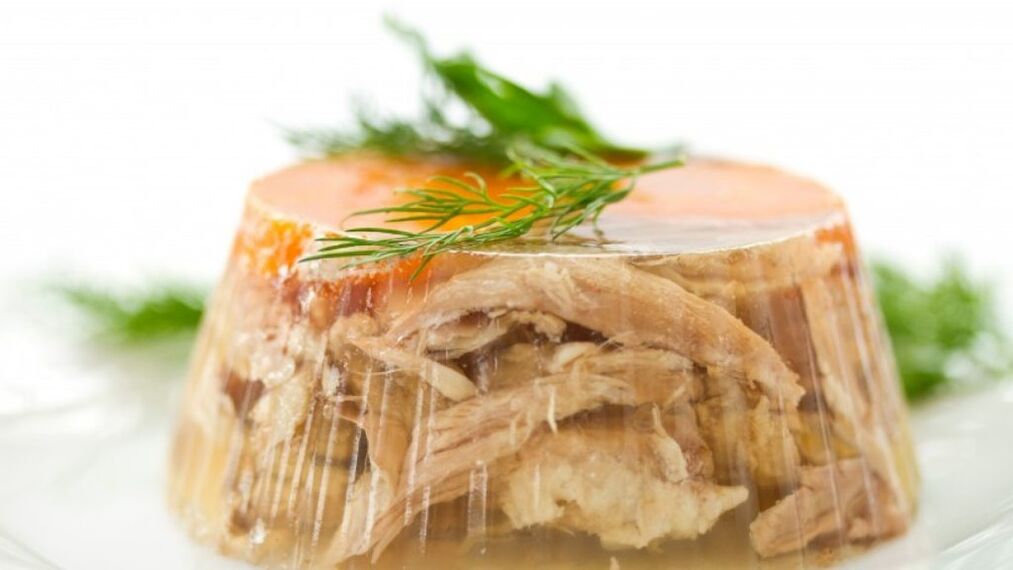
It is necessary to include enough vegetables and fruits in the food, to increase the consumption of dairy products, it is worth paying special attention to the products, rich animal proteins (beef, turkey, chicken meat, varieties of fish with low fat).It is recommended to include a collagen -rich jelly menu, contributing to the strengthening and repair of cartilage tissue of the joints.
Surgery
The treatment of hip arthrosis in the early stages is limited by conservative methods.Often a rather properly selected regimen for the treatment of drugs and the appointment of auxiliary methods to improve the patient's condition and slow down the progression of the disease.Treatment of 3 and 4 degrees arthrosis in many cases implies the need for surgery, which consists in the joint replacement surgery.
When do you need surgery?
1 and 2 stages of arthrosis of the hip joint are treated without surgery, at 3 and 4, sooner or later there is a need for surgery.The surgery is offered to the patient when changes in the joint reach the extreme stage with the complete destruction of the joint cartilage and a large large -scale growth of bone tissue.
Following the surgery, massage and exercise therapy are prescribed during the rehabilitation period.
Traditional medicine
What is the arthrosis of the hip joint and how to treat it in detail by a rheumatologist.After consulting your doctor and prescribing a treatment regimen, it is recommended to consider folk remedies as ancillary treatments.Treatment of arthrosis with folk recipes is a good additional method and helps to reduce pain, relieve swelling, increase joint mobility.
2 methods are used in the treatment of folk remedies:
- To receive inside (decoctions, tinctures of medicinal herbs).
- For topical use (ointments, compresses, packaging).
To eliminate the main symptoms of the disease, a sword -based tincture is used:
- Swamp Saber should be mixed with 1:10 medical alcohol and removed for a few weeks in a dark place.
- Then cook, strain and use to obtain 1 p. L. L.3 times a day.
- At night you can rub the tincture directly in the area of the affected joint, relieve inflammation and reduce pain.
Compression based on cabbage leaves has been proven in treatment: a few cabbage leaves and a birco leaf should be mixed, knead with hands until the juice is formed and attached to the lesion for 30 minutes.This method helps to reduce inflammation and pain.
In the treatment of folk remedies, medicinal herbs are actively used, they include: landing of St. John, Mint, Chamomile, Sellandin.In order to obtain a healing ointment, it is necessary to grind the grass by mixing them with oil jelly or baby cream and slowly rub the ointment in the joint immediately after cooking.

All additional treatment methods should only be considered as ancillary methods that are not able to independently cure such a disease and be considered in combination with medication treatment to improve the action in the complex of therapeutic procedures.
Prevention
To prevent the disease, it is recommended that you close your health carefully, pay attention to boosting immunity, lead a healthy lifestyle and carefully monitor the quality of diet.
Also, an important measure to prevent arthrosis is the prevention of hypothermia and limiting physical activity.People with excess weight are recommended to monitor a diet aimed at reducing weight and preventing the load on the musculoskeletal system.
For general strengthening of immunity, it prefers to harden and balanced physical activity.
Pregnancy and childbirth
Dilastic arthrosis of the hip joint is the congenital pathology of the hip joint, which occurs due to the improper formation of joint tissues during intrauterine development.In most cases, with the timely detection of the disease, this pathology is successfully cured over time, but leaves the risk of developing arthrosis of the hip joint in adulthood.
During pregnancy, in the presence of arthrosis of the hip joint, the overall load on the affected joint increases due to an increase in the overall weight of the body, this factor significantly impairs the course of the disease.In addition to increasing the workload due to body weight growth in pregnant women, the nutrition of the joints worsens and metabolism slows down, this is due to an increase in the cost of the body's own resources to provide everything necessary for the fetus.
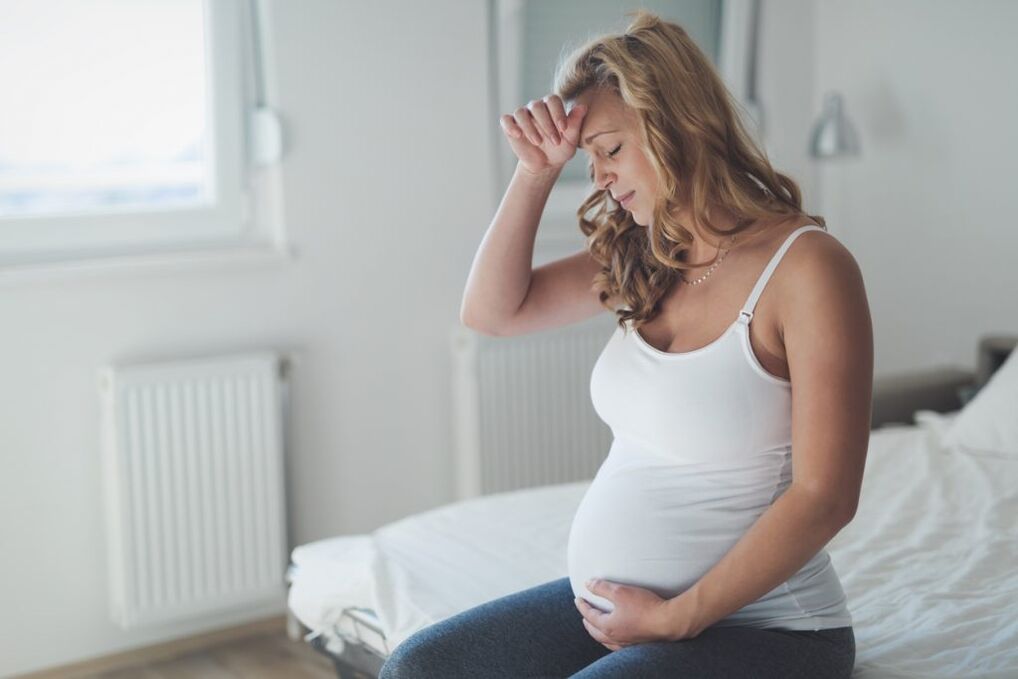
The pregnant woman, in the presence of such a disease as arthrosis of the hip joint, is strongly recommended to monitor certain conditions throughout pregnancy, namely:
- Limit motor activity, especially in the third trimester of pregnancy, when the inflammatory joint is maximum.
- Constant monitoring is required by the doctor.
- It is recommended that you follow your doctor's recommendations.
- Swimming classes have a beneficial effect on the body's load distribution, increase muscle mass in the area of the affected joint and the removal of tension.
Forecast
With timely diagnosis of hip arthrosis, the prognosis is favorable.If the disease is detected in the first stages, then the treatment is provided in a conservative way, the development of the disease slows down and is often completely cured if it does not reach 2 degrees during the diagnosis.
At 3 and 4 stages of the disease, when performing timely surgery, the prognosis also remains favorable, with the condition of following all the prescriptions recommended by the doctor and the exercise of constant control of the attending physician.With well -conducted operational actions, the artificial joint has been served for several decades.
Complications
The main and worst complication is possible damage.Disability occurs due to the complete loss of motor activity of the wounded joint.With a symmetrical lesion of both joints, one loses the ability to move independently, which greatly limits lifestyle, and also creates the risk of other complications (stagnant pneumonia, inflammation under pressure).
In order to prevent such serious consequences, it is recommended to start treatment when identifying the first signs, preventing the progression of the disease.



















